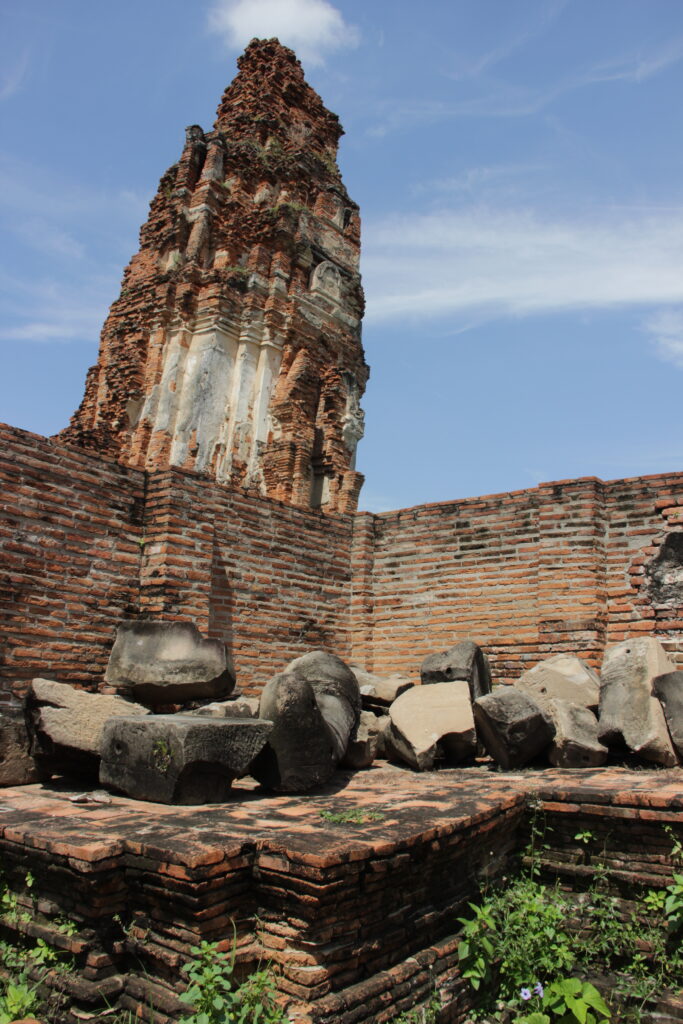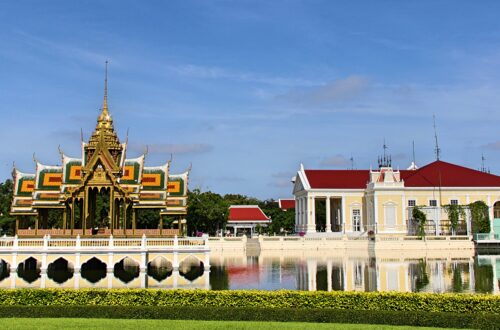Top 3 Places To Visit In Ayutthaya
Dotted with oodles of enigmatic ruins, crumbling temples and soaring stupas, Ayutthaya in Bangkok is a city steeped in rich and thriving history. The ancient capital of the majestic Siam Kingdom that was once a center of blooming trade and art is now a UNESCO World Heritage Site. It was known to be one of the wealthiest cities in the East.
The city was destroyed ruthlessly and reduced to ruins by the Burmese Army in 1767. The devastating flood that engulfed the city in 2011 further added to the damage. If you are fascinated by history and the bygone eras, this place is a must-visit for you. Being one of the most beguiling ruined city in Asia, Ayutthaya tells a tale of its glorious past through its faded majesty.
If you have ample time to explore Ayutthaya, you can stay here for a couple of days and visit all the ruins and temples. They all have a fascinating history and unique charm. However, if your trip to Bangkok is time-bound, you can take a day trip to Ayutthaya and visit the top three attractions mentioned below. The distance is around 76 Kms from the Bangkok city. The day trip can be combined with your visit to the Bang Pa-In Summer Palace which is located in Bang Pa district near Ayutthaya.
1. Wat Mahathat
Wat Mahathat means ‘temple of the great relics’. It is one of the most significant and oldest sites in Ayutthaya. The place was once a grand monastery build around the 14th century. It was the residence of the Supreme Patriarch of Thai Buddhist monks. At the entrance of Wat Mahathat, there’s a modelled structure on display that helps you understand how grand this royal monastery was before it was destroyed by the Burmese army.

The first attraction of the place is a grand central pagoda (prang) that was built in 1384 by King Ramesseum to enshrine Buddha relics. It was 38 meter high with a finial of 6 meter on top. The top portion of the prang crumbled on its own in 1625. It was restored in 1633 and built 4 metres higher that before. It collapsed again in 1911 and today, only its large base remains to trigger your imagination. There are various other crumbling stupas (chedis) and decapitated Buddha statues surrounding the place

Another major attraction of the temple is a fascinating sight of the Buddha head statue entwined in the roots of a Banyan tree. This is one of the most frequently photographed sight of the temple. There are two stories associated with it. The first one says it rolled there during an earthquake and the second story says someone picked up the head from a damaged statue and placed it in the roots of the tree. The roots have grown thick around it for several years. While taking pictures with the Buddha head, it is advisable to kneel down as a mark of respect.



When Burmese invaded Ayutthaya in 1767, Wat Mahathat was set on fire. In 1956, during an excavation held by the Fine Arts Department, a secret chamber was discovered in the ruins that housed gold jewelry, a gold casket, and the relics of the Buddha. Wat Mahathat is quite crowded most of the times, however, once you start exploring the ruins, you will find your own quiet space. The large grounds of the temple exhibit the grandeur of the place that was once a royal monastery. Being lost in a place that once existed in its full glory is quite a surreal experience.
The place offers an interesting and a serene experience at the same time. Even in the crumbling ruins of Wat Mahathat, the sight of the meditating Buddha statues reverberates peace and tranquility. Wat Mahathat is open daily from 8 am to 5 pm. The Entrance fee is 50 Baht ($1.55 approx).
2. Wat Lokaya Sutha
Wat Lokaya Sutha is a colossal temple ruin. It is a part of the park that includes three restored ruins, the other two being Wat Worachet and Wat Worapho. The temple dates back to the early Ayutthaya period and is believed to be built in 1452. The main attraction of this temple is a fascinating reclining Buddha statue called ‘Phra Bhuddhasaiyart’. This giant stone statue is 42-metre long and 8-meter-high. It faces to the east with its head resting on a lotus flower. The statue is usually wrapped in a bright orange cloth. The building that once enshrined it has collapsed, hence the Reclining Buddha rests in open.

Apart from the time-worn statue, there is an unrestored solo standing prang with a number of arched niches that still have standing Buddha images on them. There isn’t much information known about the history of Wat Lokaya Sutha except for that it was a grand royal monastery. It still holds a great religious significance for the Thai Buddhists. A lot of devotees can be seen making offerings at a small altar near the Buddha statue.
There are also some interesting photographs of the devastating flood that took over Ayutthaya in October 2011. At the entrance of the temple, there is a large parking area and numerous shops selling offerings (flowers, incense sticks etc.), souvenirs and snacks. You may participate in an offering to the Reclining Buddha for a nominal fee.
If you plan to buy souvenirs, make sure you bargain. The famous coconut ice-cream is a must try. The best time to visit Wat Lokaya Sutha is early morning or at the sunset when the lighting is just perfect to capture the best photographs of the statue. The temple is open from 8 am to 5 pm daily and the entrance fee is 30 Baht ($0.92 approx).
3. Wat Na Phra Men
Wat Na Phra Men means ‘the temple in front of the funeral pyre’. The place is believed to be the cremation ground for executed royal prisoners. Constructed in the early era of Ayutthaya, this is one of the few temples to escape the fury of Burmese army. The place served as an army base and a weapon storehouse during the war period. In 1935 Wat Na Phra Men was declared as a National Historic site.

The main attraction of this temple is a 6-metre high golden Buddha statue wearing a crown and a royal attire. It is one of the five seated Buddha statues in Thailand and is the largest crowned Buddha image. The statue is located in a well-maintained ordination hall. Although the hall is quite crowded, you can still feel the tranquil energies surrounding you. There is a priest sitting at the right who says prayers for the visitors while tying a holy thread on their wrist and sprinkling holy waters on them.


There is also an amusing ritual where you can close your eyes and pick up a ticket from a large bowl placed in the hall. Each ticket has a number on it. You can then go to the corner of the hall. There is a line of shelves with a bunch of pages kept on each shelf. You need find the shelf with your number on it and pick one page from the bunch. What’s written on the page is believed to tell your future with 99% accuracy. Quite amusing! What’s the harm in trying?
Other attractions of the temple include the remnants of the old prang, image of ‘White Buddha’, and a unique seated Buddha image of the Dvaravati period placed in a separate small Viharn. The gable of Wat Na Phra Men is a noteworthy piece of art. It features the image of Vishnu mounted on Garuda with a royal-tiered umbrella on top. The intricate carvings and the gold leaf work of the gable is one of the most beautiful artistic work from the temples of Ayutthaya. The temple is open from 8 am to 6 pm and the entry fee is 20 Baht ($0.61 approx).
After you are content with discovering the ancient Ayutthaya Kingdom, you can opt for a river cruise to go back to the Bangkok city. Sail on the restless waters of the Chao Phraya river while witnessing the major landmarks of the city and enjoying your food and drinks onboard.





One Comment
Madgicx
I am extremely impressed together with your writing skills
and also with the format on your blog. Is
that this a paid subject matter or did you customize it yourself?
Either way keep up the excellent high quality writing,
it’s uncommon to peer a nice weblog like this one these days.